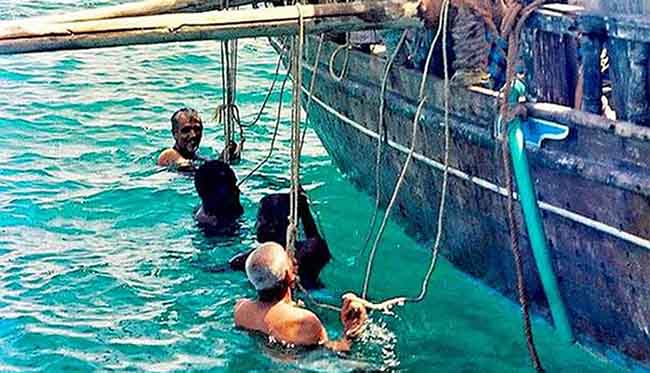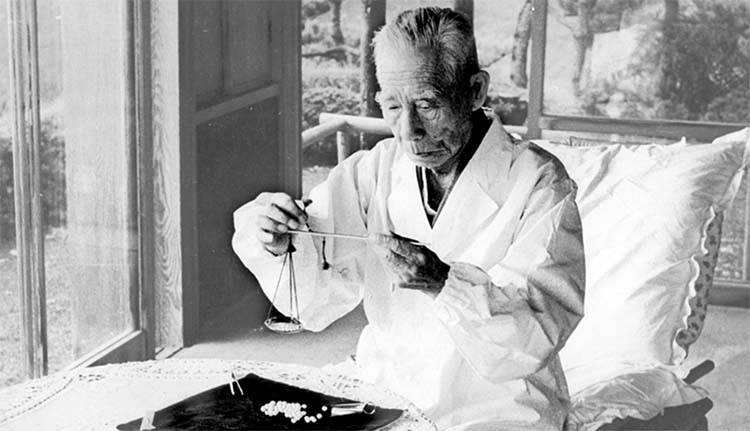Celebrated as “Queen of Gems”, pearls have been adored for centuries. The world’s oldest gem, pearl, came into existence much before written history. Discovery of pearls cannot be attributed to any one person and it is believed that they were first found by the people searching for food along the seashore.
Worn as a form of adornment, pearls were first presented as gifts to Chinese royalty in around 2300 BC. Romans considered pearls as a paramount symbol of status and decreed that only people of high birth would wear them.
Within a century the love and demand of pearls over grew six fold. Over time pearls became shrouded in myth and legend to an extent that in China it was considered to symbolise the purity of the wearer and for the one who wore pearls to the battlefield, believed that it would keep them safe.
Pearls: A Symbol for Wealth and Power
Pearls were believed to be the tears of the Gods by ancient Greeks. Oldest pearl jewellery is said to be as old as 520 BC and it was discovered in Sarcophagus- A stone coffin of Persian Princess.
The most astonishing story about pearls is from ancient Egypt where Queen Cleopatra crushed the pearl into a wine glass to host the most expensive and lavish dinner for Marc Antony. World's best pearls were said to be retrieved from the Persian gulf. Guld pearl fisheries were a good source of trade in the Persian and Arab coasts of the Gulf. Around 70-80% of natural pearls were sourced from the Arab Gulf. The Arabs had great love for pearls. When Europeans raced to capitalise the world, they also made pearls their symbol of royalty. Since natural pearls were so rare that could only be afforded by richest nobles.
The Pearl Age

Tudor England was referred to as the pearl age in the 16th century because pearls became an important trade commodity during this age. Until the 20th century the pearls could only be collected through diving. Natural pearls are now among the rarest of gems and their supply depleted to the verge of extinction.
For centuries and centuries, seawater pearls were obtained by dividing in the Indian oceans in specific areas of the Persian Gulf, The Red Sea and Gulf of Mannar whereas Chinese retrieved pearls mainly from South China Sea.
Spanish Conquistadors discovered islands of Cubagua and Margarita which were 200 km north of the Venezuelan Coast. These islands were an extensive pearl bed. They were only found infrequently in the seas of Bahrain and Australia. Overfishing in the Central American Waters results in the depletion of pearls. The pearls were so extensively extracted in the U.K. that the excavation was banned in the UK in 1998 as the river mussels began to extinct.
Kokichi Mikimoto- Father of Cultured Pearls

In 1893, Kokichi Mikimoto who was a son of a Japanese noodle maker created the first cultured pearl by manually introducing an irritant into the oyster that stimulates the formation of pearl. He started to nucleate an Akoya pearl in the 1800s. Trying for decades, his experiment was finally successful and he produced his first pearl in 1893. Over the years he worked to improve his technique. This was a whole new revolution in the pearl industry and this caused natural pearls to plummet.
Kokichi Mikimoto enticed oysters to produce round pearls. Decades before, British scientist William Saville experimented pearl culturing
At the same time, Government Biologist, Tokishi Nishikawa and carpenter Tatsuhei Mise had also independently developed the secret of pearl culture by inserting a piece of oyster epithelial membrane along with the nucleus in the oyster that would result in formation of pearl sac. Kokichi Mikimoto took the method of nucleation ahead and experimented to produce round pearls. Ultimately, he mastered the techniques of pearl culturing.
By 1935 there were around 350 pearl farms in Japan that produced around 10 million cultured pearls. Today, around 99% of pearls that are available are cultured pearls and this has not only kept the pearl industry alive, also it has kept mollusc from going extinct.
Pearls in the Ancient History of India
Lord Krishna, the hindu god is said to give pearls to his beloved wife at the time of their wedding. Pearls were often mentioned in vedas on various occasions. In Hyderabad, the royal kings of Nizams led a rich life and were fond of rare pearls. Since that time, Hyderabad has been a hub for high-class pearls. Hyderabad now has the largest number of pearl drilling centres in the whole world. Charminar’s Patar Gatti and Lad bazar are some of the centuries old commercial areas of Hyderabad where pearls can be found.